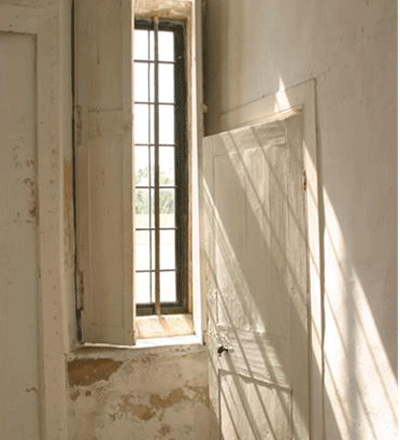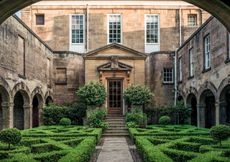How to decorate your house
Our latest bloggers from Projectbook explain that it pays to be prepared if you’re about to start decorating with paint or wallpaper

The Beginning
Maybe the inspiration to change and decorate our homes in the spring and summer is due to light and position of the sun. The bright light seems to curl around chips on the woodwork, & stumbles onto dust & cobwebs that weren't there yesterday. Paint colour cards are pondered, and plans made to refresh roomsand renovate homes, and can it be done quickly!

It may need some muscle or expert skilled help - - wallpapering is definitely best left to the professionals.
To be sure of the best results, it's essential to be prepared - either for the tradesman decorator or willing amateur you've invited to come and do the job. First of all, compile a Colour Sheet listing the chosen paints for ceiling, walls, & woodwork for each room in your home. This will be of great help in later years, as a reference to manufacturer & description. It usually surprises our clients when we apply a coat of fresh paint, (from a previous reference for the same colour) onto a surface, highlighting the darkness or fade caused by heating & sunlight over quite a short period. A decorative history of the house can be exciting not only revealing the interior fashion of the times but a little of the life & taste of the previous inhabitants.
Until the early twentieth century most houses were decorated with lime wash or distemper, (these paints date back over two thousand years.) Such paints allow movement & breathability, & can be tinted to achieve the colours and hues of your choice. Traditional paints would have been mixed on site, blending ground pigments with water for ease of application - they often just gently wore away ready for coating again subsequent years. Time of year and humidity will affect paint drying times especially if you are thinking of using lime wash or distempers - distemper in particular needs to be deployed quickly, its name refers to being mixed with a temper or fury!
* Subscribe to Country Life and save 40%
As opposed to older paints, modern colours mixed with acrylic ingredients don't allow traditional buildings to breathe, although this may not be a concern in your house. You may like to look at eco paints, clay paints & casein paints or a simple contract emulsion containing no vinyl. If you have fallen in love with a modern matt emulsion which may be in a high traffic area, then perhaps consider an extra coat of acrylic emulsion glaze to protect and be gently wipeable. Sample pots will help with decisions, see how colours change & check against fabric swatches at different times of the day when lighting conditions change.
Sign up for the Country Life Newsletter
Exquisite houses, the beauty of Nature, and how to get the most from your life, straight to your inbox.
It's good to conserve a piece of wall covering from your rooms if you have decided to strip away the existing wallpaper, and do take photos of the room before you start. Keep these in your house folder. At some time in the future someone may decide to investigate further! If possible, leave the previous layers of paint alone, lead paint is dangerous to babies and children, & shouldn't be sanded without an appropriate dust mask, and most certainly should not be burnt off. Details of distempered cornice and mouldings may be gently revealed with a soft brush and water, and a little old fashioned elbow grease.
If you want to know more about the layers of decorating history in your period home, a specialist architectural paint researcher will take samples, and by looking through the layers, tell you what the rooms would have looked like at different times. You can then enjoy some time researching galleries for paintings of interiors of the period, to see if you would like to make reference to these in your own plans.
Aftercare
Between decorating, the weekly cleaning routine should generally remove dust & marks, - a favourite household book from 1893 requires that "half yearly derangements of the house to have a coat of Whitewash given to bathrooms, lavatories, sculleries & always in the kitchen. This is very inexpensive, & will prevent many illnesses in the house. Many illnesses are carried & caused by the accumulations of dust, which are overlooked by careless housekeepers!"
It's simple to clean walls with a duster (I like microfibre ones) on a long stick. Dust seems to breed dust, and dulls all your coverings and surfaces if not removed very regularly. Wooden paintwork needs regular dusting and a damp microfibre cloth works perfectly without any chemicals.
So, when the colours and finishes are chosen, it's time to plan the sequence of work! Time for another cup of tea!
Sources & inspiration
Consultant Charles Brooking of The Brooking Collection, "who will offer advice and advise you as to the best way to reconstruct an authentic ‘in period' interior" (Projectbook 2010)
Consultant House Historian Melanie Backe-Hansen
Consultant Historic Paint Specialist: Patrick Baty
Gail & Mackenzie Devereux-Batchelor run Devereux Decorators- specialist interior & exterior decorators (0800 028 27 100), Experts in interior painting & exterior decorating - expert wallpapering, conservation and heritage decorators , working for private clients, interior designers & specialist builders.
Devereux Decorators are members of ProjectBook which has been created to help owners of listed or period properties understand how their buildings work and to help them find appropriate craftsmen, products and specialist information. The online Heritage Register contains over 540 registered businesses, the largest directory of its type in the UK. For more information, visit www.projectbook.co.uk.
Follow ProjectBook on Twitter
Country Life is unlike any other magazine: the only glossy weekly on the newsstand and the only magazine that has been guest-edited by HRH The King not once, but twice. It is a celebration of modern rural life and all its diverse joys and pleasures — that was first published in Queen Victoria's Diamond Jubilee year. Our eclectic mixture of witty and informative content — from the most up-to-date property news and commentary and a coveted glimpse inside some of the UK's best houses and gardens, to gardening, the arts and interior design, written by experts in their field — still cannot be found in print or online, anywhere else.
-
 Can't you hear me S.O.S? Our treasured native dog breeds are at risk of extinction
Can't you hear me S.O.S? Our treasured native dog breeds are at risk of extinctionDo you know your Kerry blue terrier from your Lancashire heeler? A simple lack of publicity is often to blame for some of the UK's native dog breeds flying dangerously low under-the-radar.
By Victoria Marston Published
-
 'There are architects and architects, but only one ARCHITECT': Sir Edwin Lutyens and the wartime Chancellor who helped launch his stellar career
'There are architects and architects, but only one ARCHITECT': Sir Edwin Lutyens and the wartime Chancellor who helped launch his stellar careerClive Aslet explores the relationship between Sir Edwin Lutyens and perhaps his most important private client, the politician and financier Reginald McKenna.
By Clive Aslet Published

